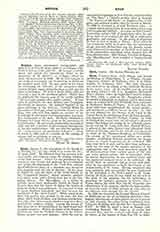

Ruysch, JOHN, astronomer, cartographer, and painter, b. at Utrecht about 1460; d. at Cologne, 1533. Little is known of his early life. He became a secular priest, but joined the Benedictine Order in the monastery of St. Martin‘s at Cologne, where he made his profession in 1492. He devoted himself to the study of astronomy and to painting, in which art he acquired much skill. He gave proof of his talent by decorating the refectory of the monastery with artistic designs, representing the lunar month and the signs of the zodiac. He went to Rome about 1508 and received a post in the pontifical palace. While here he published his famous map of the world entitled “Nova et universalior orbis cogniti tabula”. It contains in particular the new Spanish and Portuguese discoveries in America. He assisted Raphael in his great paintings in the Vatican. Leaving Rome he journeyed to Portugal, where he became known to the king, who esteemed him highly on account of his knowledge of astronomy and cosmography, and made him astronomer to the fleet. He finally returned to Cologne and spent his last years in the monastery of his profession. He possessed considerable mechanical skill, and left a number of astronomical instruments of his own construction. He was also the author of the “Admonitiones ad spiritualia trahentes”, which he wrote in 1494, and of a treatise on the mixing of colors and on painting on canvas.
HENRY M. BROCK

